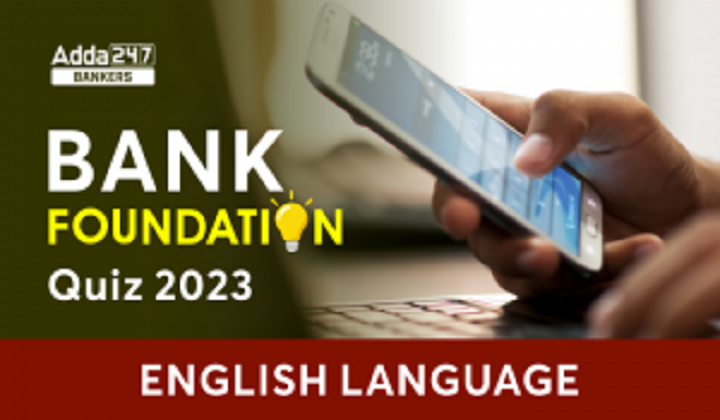Directions (1-5): Read the following passage carefully and answer the questions given below it. Certain words are given in bold to help you locate them while answering some of the questions.
The road to the fourth summit of the Bay of Bengal Initiative for Multi-Sectoral Technical and Economic Cooperation (BIMSTEC) in Kathmandu, Nepal, last week was marked by scepticism and hope. This was understandable, given the grouping’s past performance — modest in the previous 19 years and promising in the past two years. The same blend characterises the summit’s outcome. A dispassionate mindset is essential to assess its results accurately. On the positive side, the fact that the summit could be held was a success in itself. It had been delayed. More importantly, BIMSTEC leaders listened to officials, experts and business chambers, and concluded that this grouping (composed of five South Asian and two Southeast Asian nations) needed to be given a firm institutional foundation.
As a result, several important decisions have been taken. First, work begins now on drafting a charter for BIMSTEC, which has functioned s
o far on the basis of the Bangkok Declaration of 1997, and outcomes of the past three summits and the Leaders’ Retreat in 2016. Second, a Permanent Working Committee will be set up to provide direction during the period between two summits and also to prepare the Rules of Procedure. Third, the Secretariat has been promised additional financial and human resources and enhancement of its role to coordinate, monitor and facilitate the grouping’s activities. Fourth, as the institution has been handicapped due to lack of financial muscle, the leaders took the bold decision to establish the BIMSTEC Development Fund. This is not an easy task, but without strengthening itself financially, BIMSTEC cannot shed the unwanted tag of being a mere talk shop. Fifth, a push to increase its visibility and stature in the international fora will also be made. Finally, recognising that 16 areas of cooperation represent too wide a spectrum, the BIMSTEC governments will make a serious endeavour to review, restructure and rationalise various sectors, identifying a few core areas. In this exercise, Thailand has proposed a new strategy of five pillars (viz. connectivity, trade and investment, people-to-people contacts, security, and science and technology). This will be considered, although the difficulty in dropping specific sectors dear to individual member-states should not be minimised.
As to the debit side of the balance sheet, it should be noted that of at least six legal instruments awaiting finalisation, only one, the Memorandum of Understanding on Grid Interconnection, could be inked in Kathmandu. Fourteen years after signing the framework agreement on Free Trade Area (FTA), the leaders could only renew, rather lamely, their “commitment to an early conclusion” of FTA negotiations. The Thai Prime Minister bravely urged participants to accept making BIMSTEC a Free Trade Zone by 2021 as “our common goal”, but this did not find a place in the summit declaration. The Myanmar President pointed out that the grouping had established its Energy Centre in 2009, but it was still struggling for the “early operationalisation” of the Centre.
Every participant dwelt on the advantages and potential of connectivity. Prime Minister Narendra Modi aptly emphasised that “the biggest opportunity is connectivity — trade connectivity, economic connectivity, transport connectivity, digital connectivity, and people-to-people connectivity.” The Kathmandu Declaration has spelt out a number of measures, old and new, to secure this objective. However, it was noted that the Motor Vehicle Agreement and the Coastal Shipping Agreement would still need more time for finalisation. Hopes were pinned on the leaders agreeing to make the BIMSTEC summit an annual affair. But they stopped short of it, choosing a “timely holding of Summit”. Probably the timing of the next summit will be determined by the degree of progress ministers and officials achieve in the coming months. If the grouping succeeds in holding its next summit in 2019, it will be seen as a healthy sign.
The annex to the summit’s declaration presents an overview of the present state of play in various areas of activity. Plans to revitalise the Business Forum and the Economic Forum should be welcome if they help in fully engaging business and industry. Cooperation in the security domain has been progressing satisfactorily, with a new instrument added to the arsenal: a meeting of home ministers. This will be in addition to annual meetings of national security advisers and the first meeting of army chiefs, which is due to take place in Pune this month. Also envisaged is a sound plan to establish forums for parliamentarians, universities, cultural organisations and the media community. The summit articulated a vision for the Bay of Bengal Region heading towards a peaceful, prosperous and sustainable future. The region is now widely viewed as a common space for security, connectivity and development. Think tanks are fond of advising governments that they should walk the talk. But this time, that role was appropriated by the Nepalese Prime Minister and the summit chairman, who asserted: “Now is the time not just to deliberate, but also to deliver. Now is the time to translate promises into performance.” If this prescription is followed by all, BIMSTEC can become a dynamic, effective and result-oriented organisation. The coming year will be crucial in its further development.
Q1. Why the author has called the recent BIMSTEC summit full of scepticism and hope?
(a) because of its modesty in the previous 19 years and promising nature in the past two years
(b) full of scepticism because it had been delayed and full of hope because of past time relations.
(c) because leaders listened to officials, experts and business chambers differently
(d) both(a) and (b)
(e) none of these.
Q2. What was the most important unanimous decision taken by BIMSTEC leaders?
(a) BIMSTEC should be given a firm institutional foundation.
(b) The next summit will be determined by the degree of infrastructure progress.
(c) The region now will be widely viewed as a common space for urbanisation.
(d) both(b) and (c)
(e) none of these.
Q3. Which of the following statement is definitely false according to the passage?
(a) Plans to revitalise the Business Forum and the Economic Forum should be welcome if they help in fully engaging business and industry.
(b) This time, think tank role was appropriated by the Nepalese Prime Minister and the summit chairman advising governments that they should walk the talk.
(c) The leaders of the institution have taken the bold decision to establish the BIMSTEC Development Fund
(d) However, it was noted that the Motor Vehicle Agreement and the Coastal Shipping Agreement has been progressing satisfactorily.
(e) none of these.
Q4. Which of the following statement is definitely true according to the passage?
(a) The schedule of the next summit will be determined by the extent of progress ministers and officials of different groups achieve in the coming months.
(b) The Myanmar President pointed out that the grouping had established its Energy Centre in 2006, but it was still struggling for the “early operationalisation” of the Centre.
(c) Cooperation in the education domain has been progressing satisfactorily, with a new instrument added to the artillery.
(d) The region is now widely viewed as a common space for security, connectivity and reflectivity.
(e) none of these.
Q5. What does author mean by “walk the talk”?
(a) not speaking equivocally.
(b) implementation without deliberation.
(c) talking boastfully
(d) act in a way that agrees with the things said.
(e) none of these.
Solutions
S1. Ans. (d)
Sol. Option (d) is the most suitable choice. The first option has been mentioned in the 4th line of 1st paragraph and the second option has been mentioned in the 6th line of the paragraph.
S2. Ans. (a)
Sol. Option (a) is the most suitable choice. option (a) can be derived from the last lines of the first paragraph, “More importantly, BIMSTEC leaders listened to officials, experts and business chambers, and concluded that this grouping needed to be given a firm institutional foundation.”
S3. Ans. (d)
Sol. Option (d) is the correct choice. It is the only statement which is definitely false according to the given passage. Refer to the 5th line of 4th paragraph where this particular statement is given as “However, it was noted that the Motor Vehicle Agreement and the Coastal Shipping Agreement would still need more time for finalization”.
S4. Ans. (a)
Sol. Option (a) is the correct choice. It is the only statement which is definitely true according to the given passage. Refer to the 2nd last line of 4th paragraph where this particular statement is given as “Probably the timing of the next summit will be determined by the degree of progress ministers and officials achieve in the coming months”. “Cooperation in the security” is replaced by “Cooperation in the education” and the ‘artillery’ is replaced by ‘arsenal’ making Option (c) incorrect.
S5. Ans. (d)
Sol. Only option (d) stands out as the suitable choice for the answer. The answer has to be deduced and concluded from last paragraph based on the author’s statement “Think tanks are fond of advising governments that they should “walk the talk”. But this time, that role was appropriated by the Nepalese Prime Minister and the summit chairman, who asserted: “Now is the time not just to deliberate, but also to deliver.”





 English Language Quiz For Bank Foundatio...
English Language Quiz For Bank Foundatio...
 English Language Quiz For Bank Mains Exa...
English Language Quiz For Bank Mains Exa...


